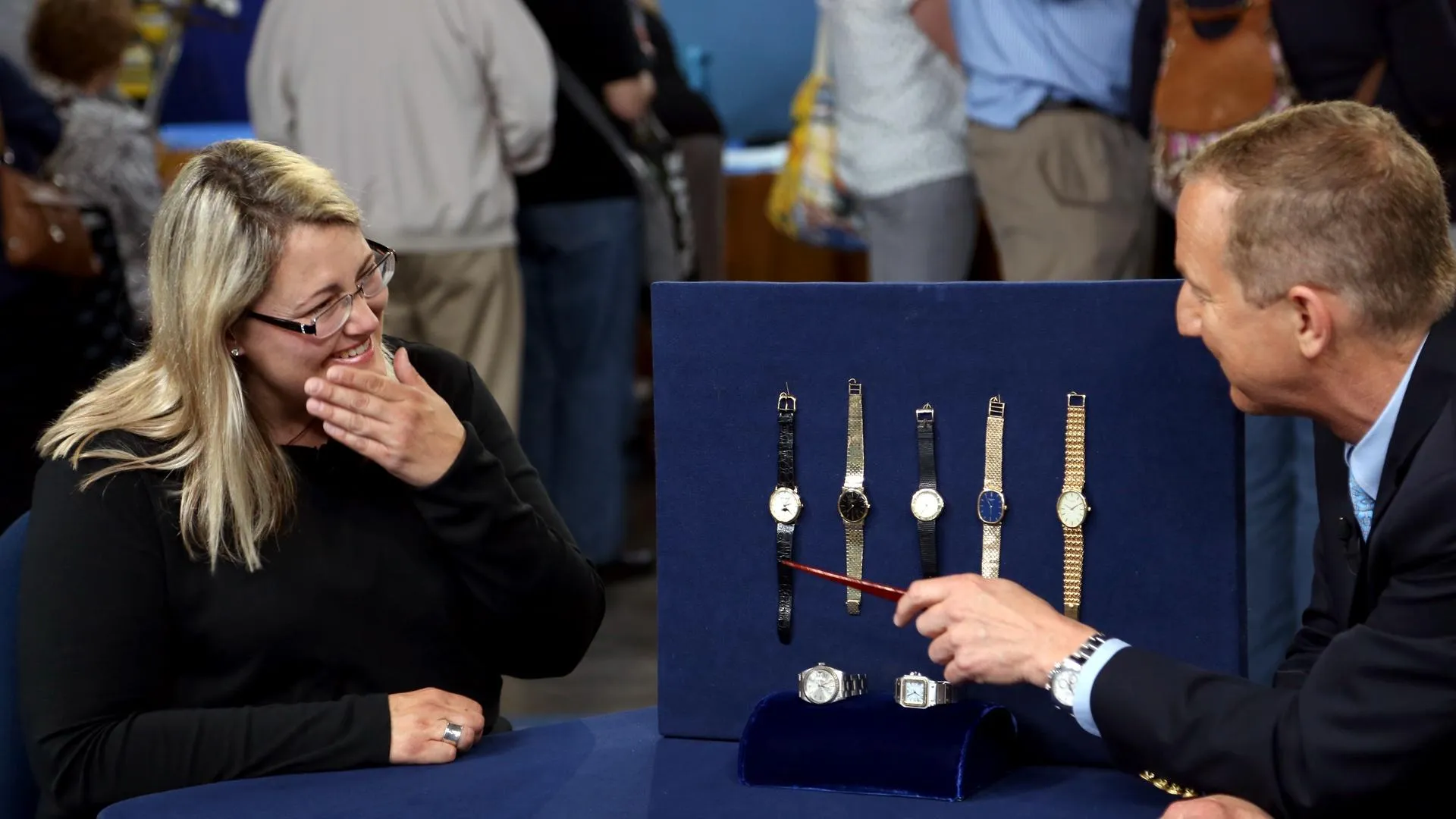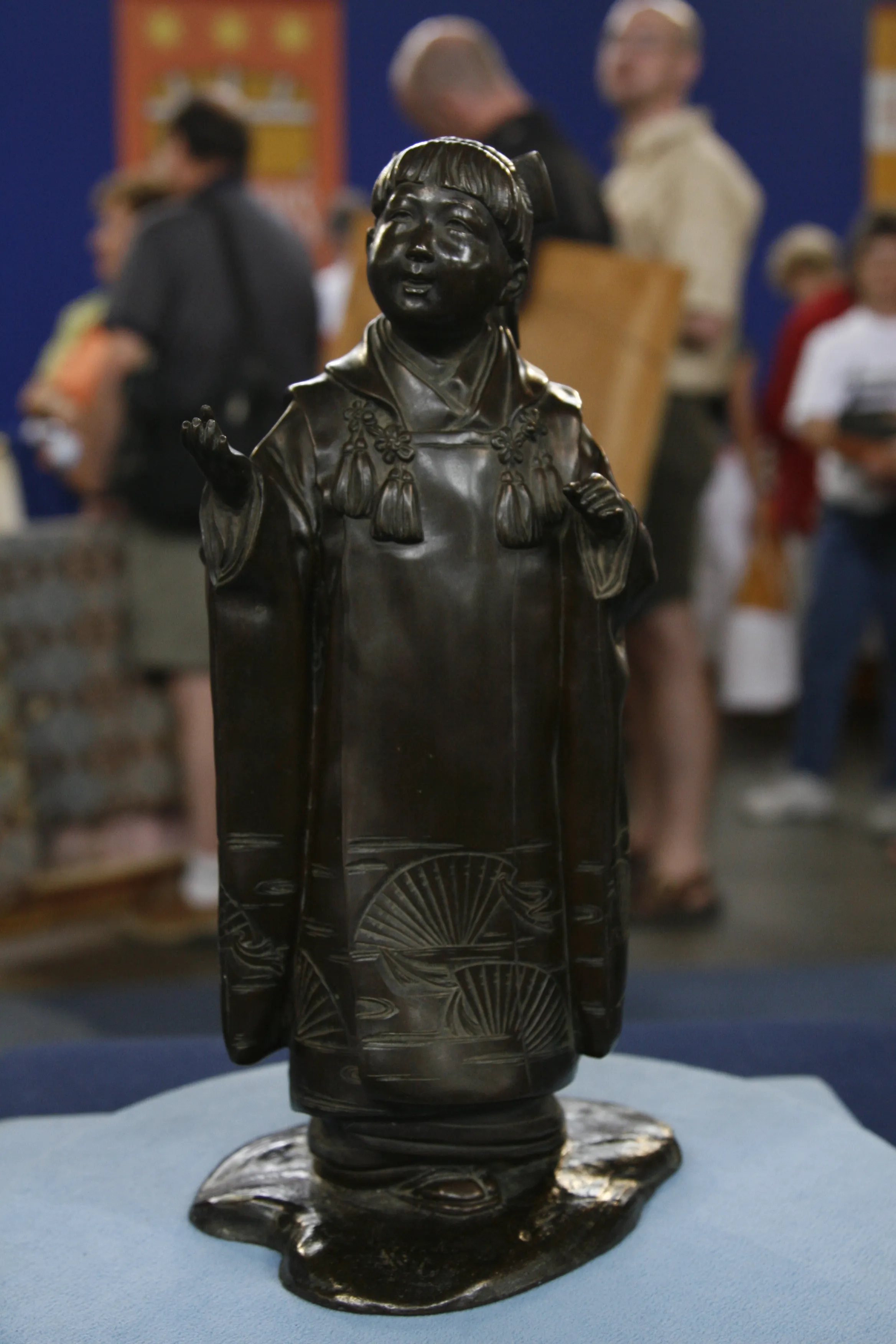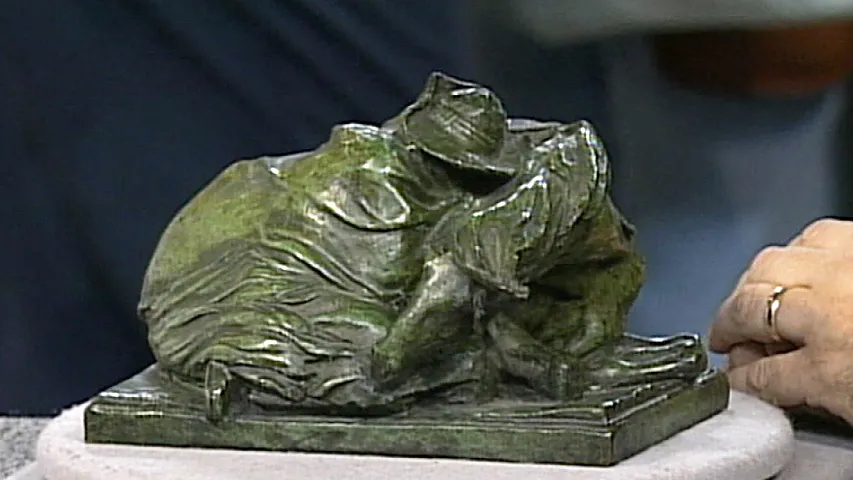GUEST: This is a piece that was inherited from my great-great-grandmother, who was born in 1881. She got it from her sister sometime in the late 1890s to early 1900s. It's just kind of been passed down in the family. Nobody knew that much about it. I was always told that it was a bronze incense burner, but I never knew if that were true or if that was just family folklore. We weren't sure if it was a functional piece or a decorative piece.
APPRAISER: One of the first things that anyone would notice is the size. It's large. And I could understand why you thought incense burner, because it's got the spout right here, and I guess you were thinking the smoke would come out of the spout.
GUEST: You know, and I never questioned it, so I really didn't have an alternative thought of what it was, so we just accepted that.
APPRAISER: One of the things that I noticed is the weight. It's very light, actually, it's thin, and it's actually composed of two sheets of metal, and the metal is bronze, but with a very high copper content.
GUEST: Oh.
APPRAISER: And those two sheets of metal allow for the exterior to have what is called a repoussÈ decoration, which is this kind of relief decoration of vines and some flowerheads and so on, and some of that is punctuated with figures and also with semi-precious stones, in this case turquoise. Putting these things together, we come up with a particular part of Asia that this is probably from, which is the Himalayan region.
GUEST: Oh, wow.
APPRAISER: Now, there are a number of Himalayan cultures.
GUEST: Okay.
APPRAISER: The most prominent that people see objects from would be from Tibet.
GUEST: Okay.
APPRAISER: And this particular form is actually conforming to a Tibetan ewer that is typically a much smaller size. By having thin metal yet very strong sides, you can actually put liquid in it, and that is what this was for: it is for holding liquid, probably a fermented beverage of some sort, probably for a ceremonial occasion, and very likely, it would have been included in an important temple complex where you would have had a lot of people who would have been participating in whatever that event would have been. Most likely made from the mid part of the 19th century toward the end of the 19th century.
GUEST: Okay, okay.
APPRAISER: And then of course the question is, what's it worth? Conservatively, one can say $5,000 to $8,000 at auction.
GUEST: Oh, wow. It's been sitting on my fireplace. I've got to be careful. (laughs) Wow, that's so exciting.









